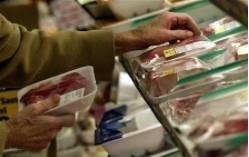More than a year ago, the coronavirus pandemic caused huge disruptions in the global economy, many of which are still being dealt with or suffered through today. One of those continuing challenges, that hit Americans in the stomach, was the closure of meat packing plants, causing a bottleneck of live cattle and beef shortages in grocery stores all over the country.

Dustin Aherin, vice president of Rabo AgriFinace, has offered congressional testimony on this ongoing issue. Some believe there is something nefarious is going on in the cattle market, Aherin told Radio Oklahoma’s own Ron Hays he believes the marketplace is doing what it does best: balancing out supply and demand.
“As frustrating and challenging as the beef industry has been for cattle producers over the last couple of years, there really are rational supply and demand factors that have driven this price spread between fed cattle prices and wholesale beef cutout prices,” Aherin said.
He said it is as simple as having more cattle available than there is plant harvesting capacity.
“When you have an oversupply, relative to that demand for slaughter cattle or the ability to harvest them, it puts downward pressure on those cattle prices,” Aherin said.
A frustrating fact of the matter cattle producers see is record-high demands in beef products at consumer and export levels. Aherin said until the balance of operational packing capacity aligns with fed-cattle supplies, demand dollars can’t trickle down to producers.
Some argue that packers should expand capacity to solve the issue. Aherin said looking back, the beef packing industry was not a profitable endeavor, that is why the U.S. saw so many plants shut down between 2000 and 2015.
In the last five years, as cattle numbers have grown and packing capacity has stayed flat, Aherin said packers realized they needed to prepare for another slump in cattle numbers. As cattle numbers decline, that slump may be beginning now, he added.
“I would say there is some expansion going on in the industry,” Aherin said. “Both by independents and some incumbents. By our counts, if all this new capacity does come online, we could probably add 8,000 head per day of fed-cattle capacity over the next five years.”
Click here to see more...